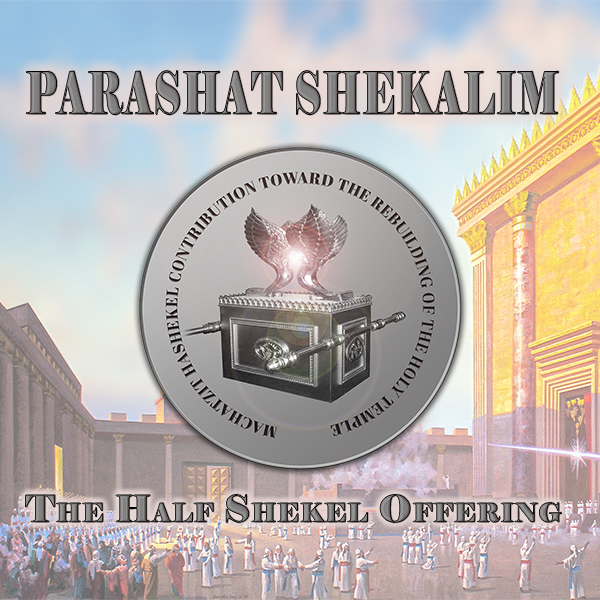“He shall be holy to you”
(Leviticus 21:8)
Iyar 18, 5781/April 30, 2021
This week’s Torah reading of Emor, the third to the last parasha in the book of Leviticus, opens with one last intense focus on the kohanim – the consecrated priests who serve in the wilderness Tabernacle, and later, in the Holy Temple in Jerusalem. Emor tells us which family members a kohen can bury, and which family members he cannot, so as not to “defile himself for a dead person among his people;” (Leviticus 21:1) how he should mourn his dead, who he can marry and who he cannot, and which physical blemishes disqualify him from performing certain primary functions in the Holy Temple. On the one hand Torah tells us that a kohen “is elevated above his brothers, upon whose head the anointment oil has been poured or who has been inaugurated to wear the garments,” (ibid 21:10) and on the other hand, immediately after enumerating the physical blemishes that disqualify a kohen, Torah enumerates a like list of physical blemishes that disqualify animals from being kosher offerings, suggesting to us that, while the kohanim may be elevated above their brothers, they, like the rest of us, are not so very different from the animals, who, just like man, were created on the sixth and final day of creation.
For many people, this information, like much of what we have learned throughout the book of Leviticus, is arcane, mystifying, and not relevant to our lives. Why, indeed, does Torah share with us so many details of the roles and requirements of the kohanim? Is this not a case of TMI (too much information)? Can’t all of these abstruse details be saved for a handbook for kohanim that only they would read?
The truth is the book of Leviticus is a handbook for kohanim. Hence its popular moniker in Hebrew, Torat HaKohanim. But while so much of the content of Leviticus applies only to the kohanim, Torah sees fit to share all this information with the entire nation of Israel, and for over three thousand years the people of Israel have been reading and studying and teaching and explaining the words of Leviticus, throughout the nearly one thousand years when the Holy Temple stood and functioned, and throughout the two thousand years since the Temple was destroyed and the Divine service silenced. Certainly the Torah’s transparency concerning the rules and regulations which govern the lives of the kohanim serves the purpose of providing for a public oversight over the kohanim, and this, in itself, is very healthy. But Torah has another, even greater reason for sharing the intimate details of the lives and responsibilities of the kohanim with the entire nation of Israel. The kohanim are our brothers.
The kohanim were never intended to be an elite class, serving G-d in the Temple for their own esoteric purposes. The kohanim are meant to represent us – all of us – their brothers and sisters! Their work in the Holy Temple is done on our behalf, for us, the entire nation of Israel, and for the entire family of nations who ascend to Jerusalem and worship at the Holy Temple. They are doing G-d’s work, but no less importantly, they are doing our work! The kohanim are us! It is true that the kohanim are all direct descendants of Aharon, the first Kohen Gadol (High Priest), and biological brother of Moshe, and in this way they are a separate entity, but their hereditary separation is intended for the purpose of maintaining their status as brothers to all. It is their separate status which enables them to serve all peoples equally when they stand before G-d in the Holy Temple.
Another crucial insight which Torah shares with us throughout the four books of Torah (Exodus, Leviticus, Numbers and Deuteronomy) is that the kohanim, beginning with Aharon, are painfully and poignantly human. Aharon sinned with the entire nation of Israel in the debacle of the golden calf. His two eldest sons, Nadav and Avihu, perished in a terrible and inexplicable tragedy. Aharon’s silent suffering at the loss of his two sons reveals the enormity of his anguish. Aharon makes mistakes, even, as recorded in Leviticus, while performing certain functions in the Tabernacle, for which he is scolded by Moshe. Aharon’s empathy and compassion and love for his fellow man is evident throughout his life, and brought into sharp focus when he literally runs into the face of death, incense censer in hand, in order to save the lives of his brother Israelites, as recorded in the book of Numbers.
When we read in Leviticus the many great and painstaking details which govern the lives and labors of the kohanim, we are not being treated to a sneak peek into the world of a strange or exotic species; we are being taught deep spiritual insights into the lives of our brothers, our eternal brothers, whose lives are dedicated to serving each and every one of us before G-d, in His Holy Sanctuary. It is essential that we are enlightened by these countless details, for how can we be served by the kohanim if we are ignorant of the immense responsibility which rests upon their shoulders as they perform their work on our behalf. The kohanim, Leviticus teaches us, are sanctified. And that sanctification is not merely in the eyes of G-d, but in our open and enlightened eyes, as well: “You shall sanctify him [the kohen], for he offers up the food offering of your G-d; he shall be holy to you, for I, HaShem Who sanctifies you, am holy.” (ibid 21:8)


0 Comments